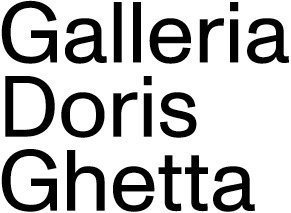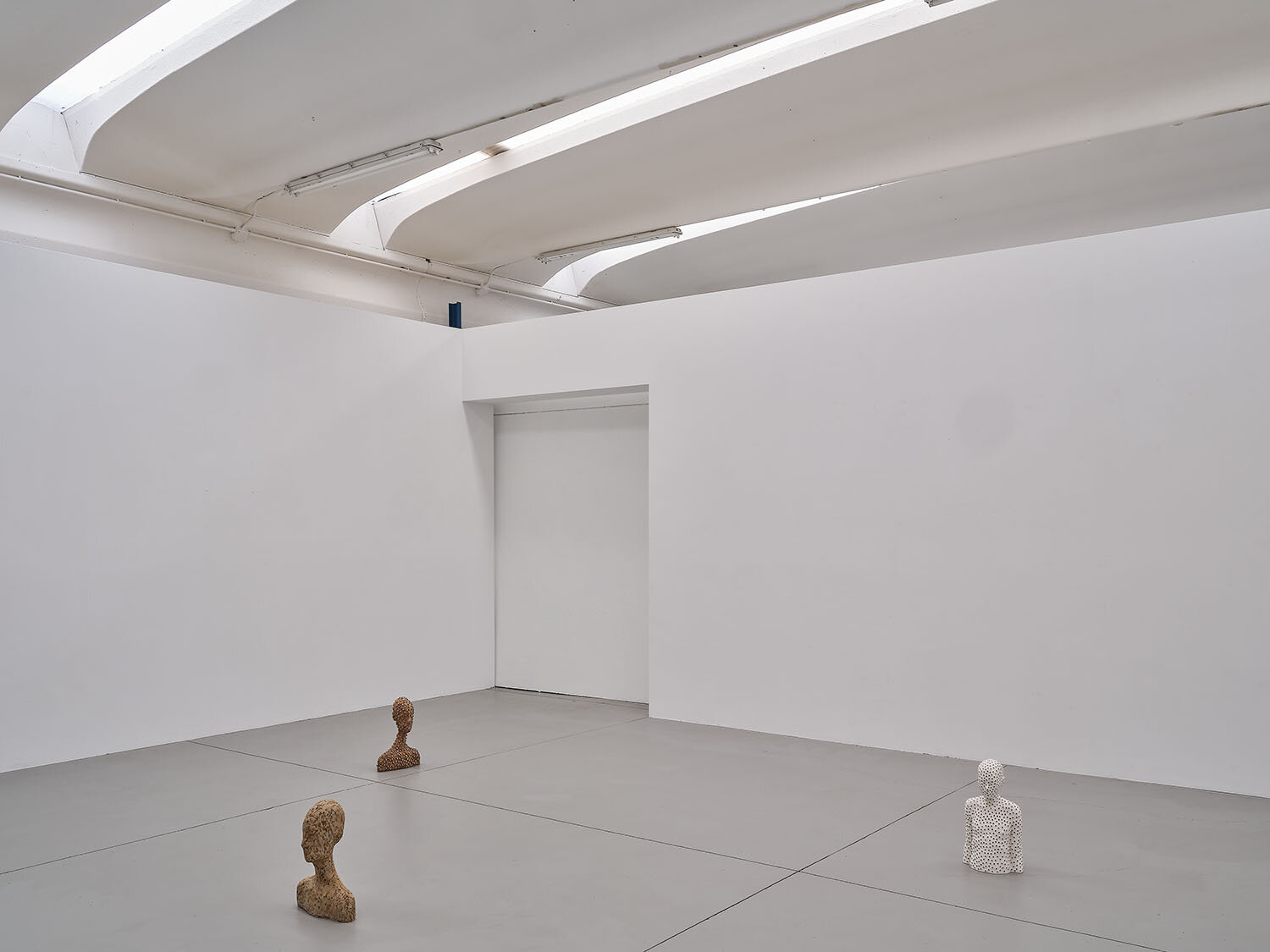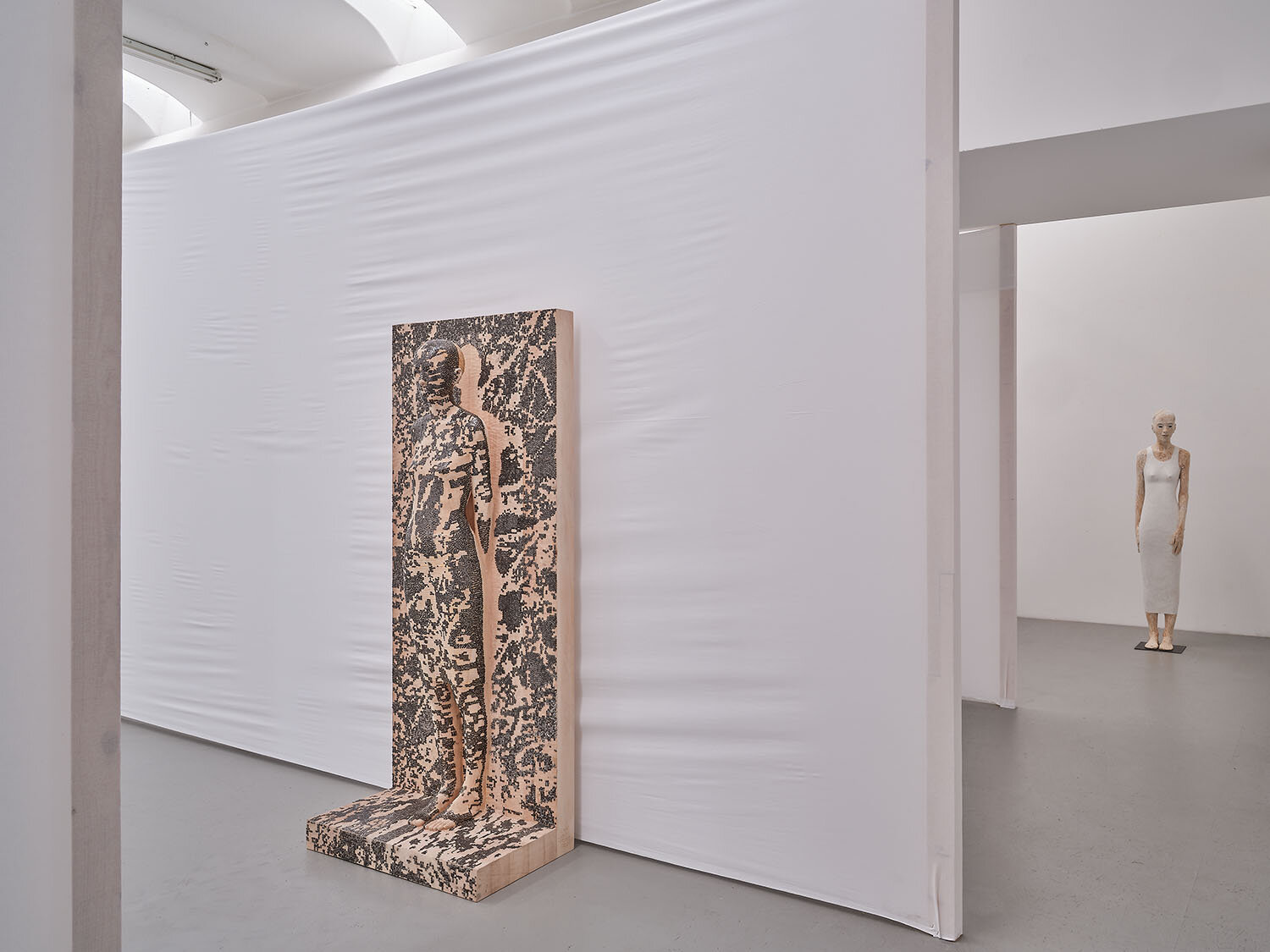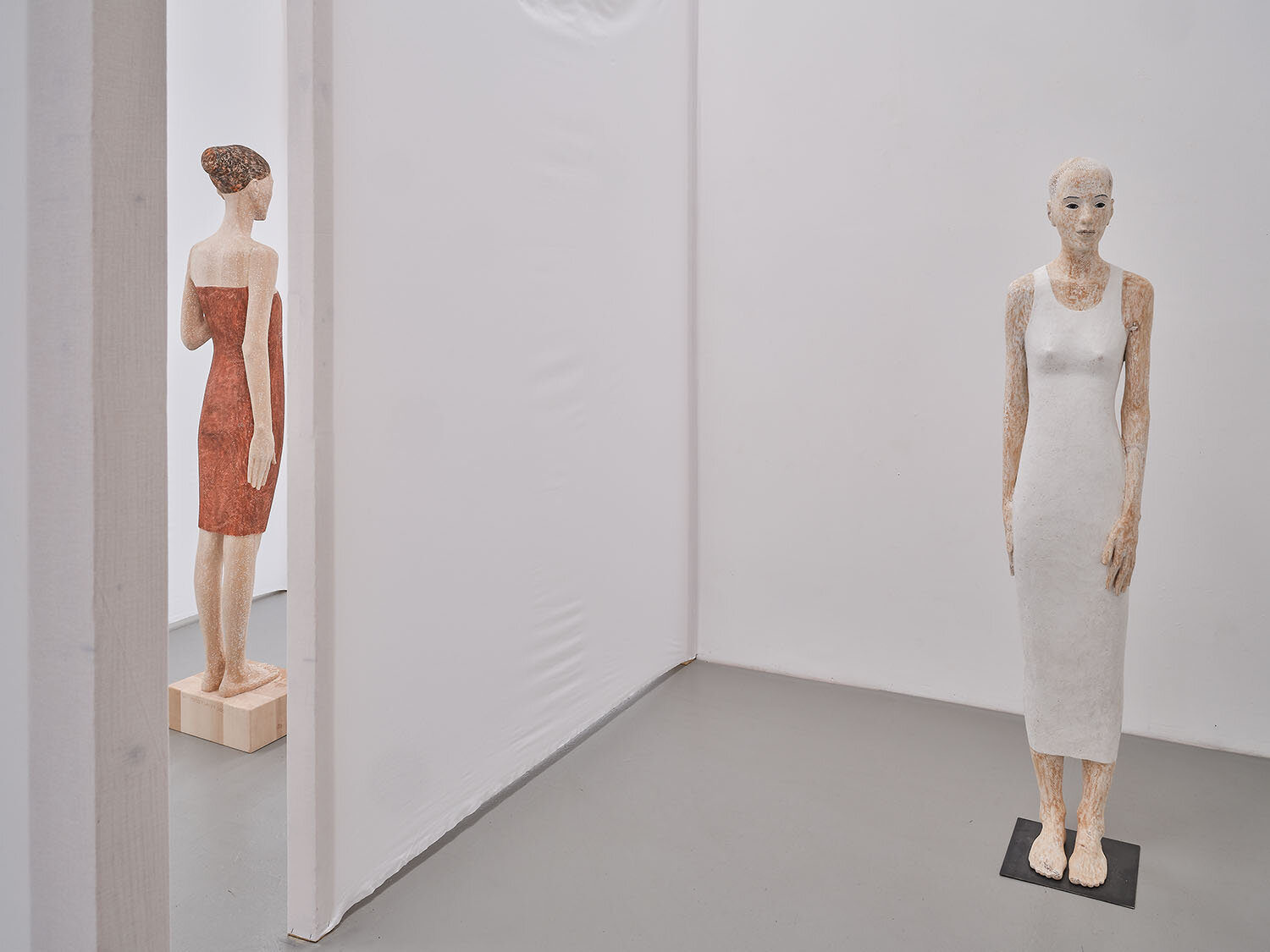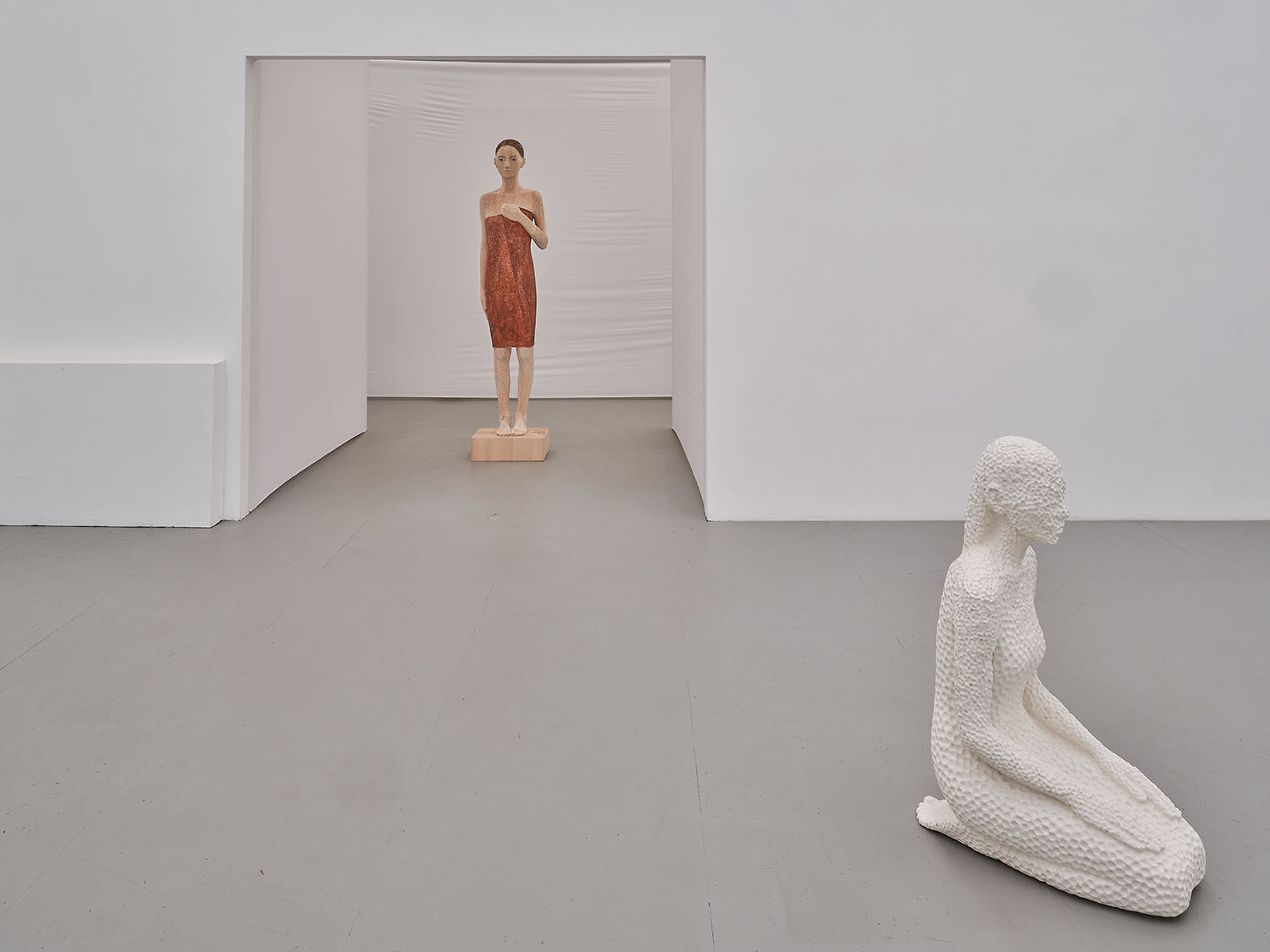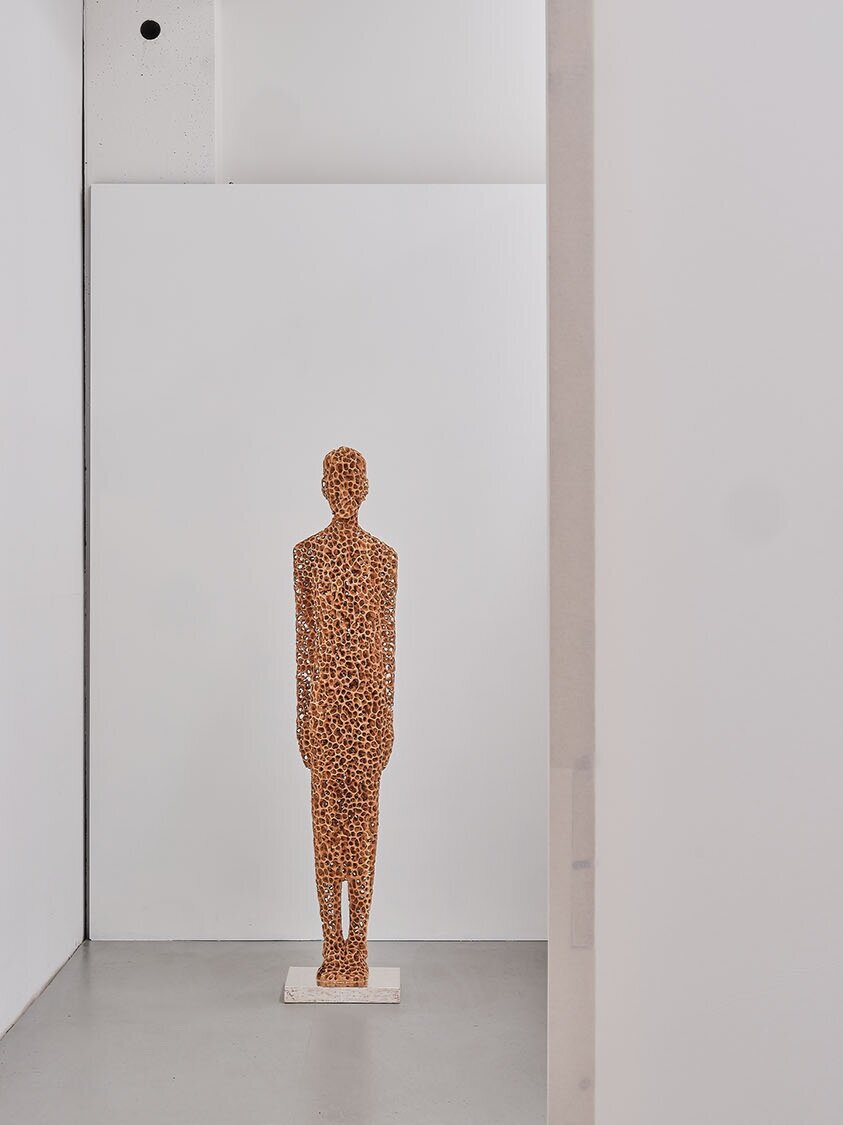Di per di. In Ladin it means: Day by day. Or even: Say for say. It changes according to how we look at things. In the exhibition Di per di di, Walter Moroder presents a group of his most recent sculptures, supplemented by a selection of works on paper and canvas. The central theme is still a focus on the human figure, which emerges as experience. In addition to the prominent female figures on a human scale staring into space, the exhibition also presents sculpted bodies and disappearing creatures, as well as heads, as part of something that was once a whole. The figures underline their isolation and face very heterogeneous destinies. Women with a graceful visage in a white dress and a simple décolleté, a body like an ant's nest, a standing figure like a mummy, a female figure sitting in the middle of the floor in a room. As before, these are figures of proximity and distance at the same time. Through sculpture, we focus on the sensory experiences that occur when people are physically confronted with each other. In this way, the real, which is normally easily distinguished from the abstract dimension, now becomes blurred. It concerns first of all the sculptor in his studio, which - unlike photography - avoids any representation or illustration of human anatomy in his sculpted figures, but at the same time evokes sensations that refer to human social codes. This is particularly true for the slender female figures standing, whose only purpose seems to lie in their waiting. In their coldness, the sculptures renounce real-world props and, after their experiences in the exhibition Sun Plaza (Galleria Ghetta, 2018), have finally found their place in a spatial enclosure.
For us as spectators, on the other hand, it is the entrance into a space of deepening that would not be complete without our approach as spectators, in search of an approach to the works by assuming a voyeur or intruder behaviour.
Although the figures with their open presence offer themselves as objects for sensory observation, we, as spectators, seem absent and irrelevant to them. What we see are embodiments of experiences that are mainly feminine and more rarely masculine, showing their position, silence and looks. The vertical figures on a human scale stand in a dominant position, their eyes look into the void, or, when they are closed, they look inside themselves, and are seen by us looking at them. They warn us: Remember that you are seen, when you want to see. But note that what you see remains only an idea. From this work on the human figure we get an anthropological trace of what human bodies reveal of their existence through the visible, but not without preparing at the same time for the loss of certainties or norms. Trying to understand the experiences that these figures carry within themselves, they involve us with sensations near and far, with the materiality of the human body, life and the invisible forces that move them. We understand how the unknown and the invisible are part of the same whole and how the body is only the appearance of the perception of the other. Man is not transparent, not for himself and not for others.
Walter Moroder was born in 1963 in Ortisei where he lives as a freelance artist. He left very early his artistic roots in the tradition of sculpture in Val Gardena. He dedicates himself to the elementary visible and invisible experiences of man with himself. In this way, the influences of ancient and sculptural works from non-European cultures such as Egypt, Central America and Asia become evident.
Markus Klammer
